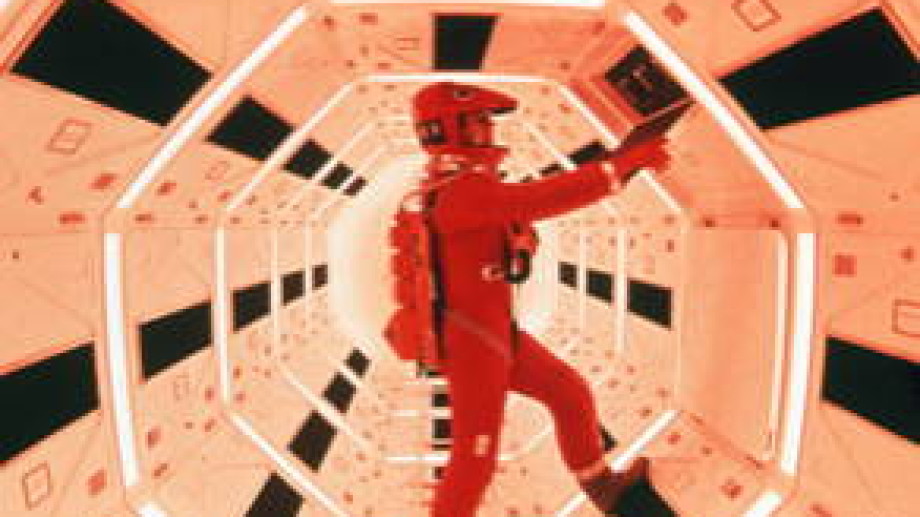
Stanley Kubrick's 2001: A Space Odyssey
Like many younger moviegoers today, I was raised on home video. My nostalgic haven isn’t the repertory theater, but the video store. Cinephile DVD labels taught me whatever I know about film history. Busy defending my precious discs and tapes against the threat of online streaming, the last thing on my mind growing up was the fate of theatrical projection.
Part of the problem was geographical: increasingly, theatrical screenings of classic, international or independent films have been limited to select theaters clustered in major cities. To live in New York, where such theaters number well into the double digits, is many a young cinephile’s dream (in my case, thankfully, the dream came true). Increasingly, it’s seen as a lost cause to argue that films ought to be seen in theatrical projection, especially when it’s to the detriment of other formats. I recall chafing for years at being told that I hadn’t seen, say, 2001: A Space Odyssey until I’d seen it in theaters, when no theater in my hometown was willing to screen it.

Jacques Tati's Playtime
2001 is one of fifteen films playing in the Film Society’s upcoming series “See it in 70mm!,” a highlight reel from the golden age of cinema’s most cinematic format, and a reminder why all those champions of the big screen still have a powerful case. Developed to combat the nation’s fondness for small-screen entertainment, 70mm film was wider, sharper, and above all bigger than film had ever been. It gave filmmakers more space to fill than ever before—for a certain brand of director, a welcome challenge. It brought Kubrick as close as possible to occupying every inch of his viewers’ fields of vision, and to realizing 2001’s hallucinogenic finale , in which the frame seems to expand outward before our eyes. It let Jacques Tati, whose Playtime is crammed inch-to-inch with puns, gags and activity in general, compose some of the cinema’s most intricate, not to mention hilarious, comic set pieces. And it gave a languid, late-career John Ford even more room to stretch out: Cheyenne Autumn’s heroes often seem stuck floating around, unmoored in Ford’s big, empty desert landscapes.
Those three films, not to mention the series’ other twelve selections—from classics like My Fair Lady and The Sound of Music to unjustly buried obscurities like Konrad Wolf’s Goya: or the Hard Way to Enlightenment—are so clearly built to the 70mm scale that it’s tempting to say that, in some sense, you really haven’t seen them until you’ve seen them big. But is it really just the size of the image at stake here? Perhaps Kubrick, Ford, Tati, et al. didn't just want audiences to see their films projected at a suitable size, but also to convene in the same spot, sit down in the dark, and give themselves up to something too big to process all at once. They wanted us to feel small together.

Robert Wise's The Sound of Music
“See it in 70mm!” is a chance to see some of cinema’s grandest works on the scale they were originally made, but it’s also an excuse to remember why the actual act of moviegoing has weathered so many challenges and outlived so many detractors. There’s something fundamentally appealing about the idea of submitting as a group to something incomprehensibly vast; it’s part of the basis, too, for mass celebrity worship, spectacular pop concert backdrops, even Fourth of July fireworks. It’s close, perhaps, to the human desire for glory—or maybe just our equally-strong inclination to dodge responsibility for that which is actually within our power, by diverting our attention to things well beyond our control. The big screen has long been our escape and our silent social club, our thrill ride and our church, and these fifteen films, taken together, remind us why.
For those far-flung cinephiles without access to rep theaters or 70mm home-projectors, to really see a film might not be to see it big, but to make it big—to invite some friends, turn out all the lights, and surrender to each image as if it extended well beyond your field of view. Those of us who live in New York have the rare privilege of being a subway ride away from theaters willing to do all that work themselves. “See it in 70mm!” ends January 1, a day of taking stock, of counting blessings. It’s a welcome reminder that theatrical moviegoing is a blessing worth counting.
“See it in 70mm!” runs from December 21 – January 1. Tickets go on sale November 29. For a full list of films, check out the press release.



